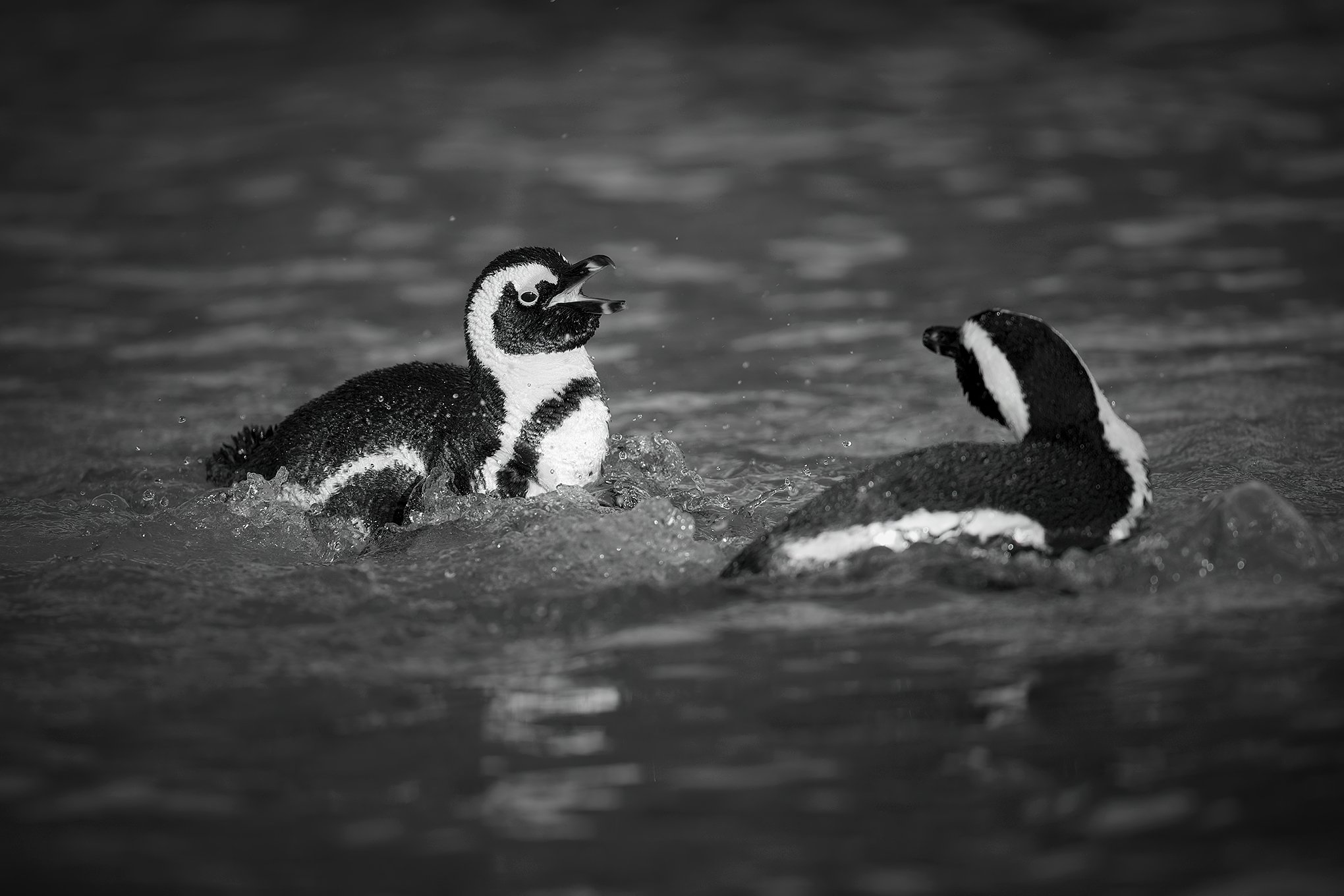Namibian Foundation for the Conservation of Birds (NAMCOB)
African penguins by © Dan Callister/Penguins & Sharks
From SANCCOB, Lüderitz, Namibia
The Southern African Foundation for the Conservation of Coastal Birds (SANCCOB) continues to spread its wings across the geographical range of many endemic seabirds, such as the African penguin, by partnering with the Debmarine-Namdeb Foundation, Namibian Chamber of Environment, Namibia Nature Foundation, African Penguin Conservation Project and The Maryland Zoo, to form the Namibian Foundation for the Conservation of Birds (NAMCOB).
Namibia’s coastline is home to a wide diversity of wildlife, with many endemic seabird species. Seabirds are an integral element of biodiversity and serve as key indicators because they are visible and are top predators, of the state and health of the marine ecosystem. The Namibian Islands’ Marine Protected Area (NIMPA) was proclaimed in 2009, stretching 400 km along the southern Namibian coast, covering almost 10,000 km2 with a key objective to protect the breeding sites and main foraging areas of seabirds along Namibia’s coast. Unfortunately, a draft management plan has not yet been implemented, there is a lack of human capacity and insufficient funding in the marine conservation sector in Namibia, so the NIMPA is ineffective and not fulfilling its mission.
The Namibian crash of sardine and anchovy stocks more than five decades ago showed the shift of productive upwelling ecosystem to a less efficient system dominated by poor-value species like the bearded goby; contributing to the dramatic decline in the populations of the African penguin (>50% since the 1970’s), the Cape gannet (90% since the 1970’s), and the Cape Cormorant (>50% in the last three decades). The main threats facing seabirds in Namibia include a lack of food availability, marine oil pollution, and habitat loss. Disease also poses a threat after highly pathogenic Avian Influenza killed over 500 adult African penguins in 2019.
The project aims to establish a new national non-government organisation (NGO), the Namibian Foundation for the Conservation of Seabirds (NAMCOB) in Lüderitz. NAMCOB’s founding members are from the Southern African Foundation for the Conservation of Coastal Birds (SANCCOB), Debmarine Namdeb Foundation, Namibian Chamber of Environment (NCE), Namibia Nature Foundation (NNF), African Penguin Conservation Project, and Maryland Zoo, USA. The mission of the project is to have a net positive impact on biodiversity and the sustainability of the Namibian marine environment through the protection and conservation of endangered seabirds. The project will be based in Lüderitz but will also focus on mitigation measures against threats facing seabird species along the entire Namibian coastline.
NAMCOB will work with the Ministry of Fisheries and Marine Resources to support conservation activities including monitoring of key seabird colonies, protected area monitoring, oil spill preparedness, and community engagement and awareness activities. Increasing in-country capacity will assist government with urgent research necessary for the management of NIMPA, especially through accurate annual census counts of important seabird populations that address data gaps in understanding population trends. Analysis of this data leads to evaluation of the overall health of the marine ecosystem.
Two of the major threats facing Africa’s seabirds are oil pollution and lack of food caused by overfishing and climate change. To conserve the marine environment, we will advocate for improved sustainable fishing practices (specifically extending the current moratorium on sardine and pilchard fishing quotas) to ensure this resource regains a healthy sustainable threshold. To minimise the risk of oil on seabirds, we will advocate for protection of important marine colonies from potentially devastating oil spills, oil spill risk assessments are done, and effective contingency plans are in place. The establishment of a non-profit organisation dedicated to seabird conservation in Namibia will be a key facilitator in enabling this vital policy advocacy with both the Government of Namibia and other key stakeholders. The first phase of this project is complete and includes the drafting of a national oiled wildlife contingency plan, oiled wildlife response equipment stockpiles, and ensuring personnel are trained in seabird first response and stabilisation.
Going forward, NAMCOB’s aim is to establish a specialised marine facility that will form a hub for research, education, and awareness activities, and will attract further visitors to the area. The new centre will be used to promote Lüderitz as a tourist destination and contribute to an improved economy.
To learn more, please visit NAMCOB, SANCCOB & MARYLAND ZOO

